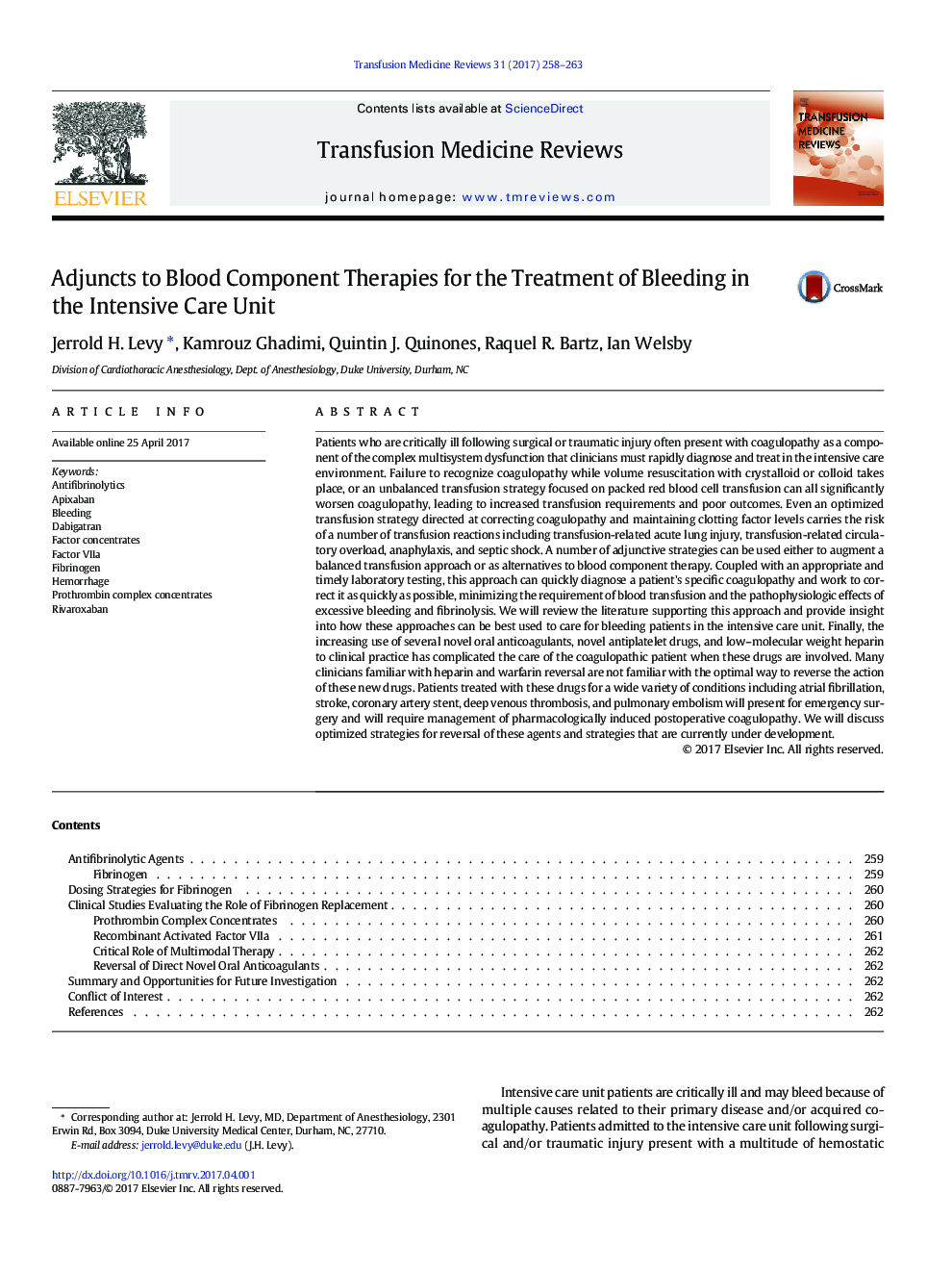| کد مقاله | کد نشریه | سال انتشار | مقاله انگلیسی | نسخه تمام متن |
|---|---|---|---|---|
| 5664773 | 1591029 | 2017 | 6 صفحه PDF | دانلود رایگان |

- Factor concentrates do not require cross-matching, are highly purified, and are increasingly used for treating bleeding in critically ill patients.
- Fibrinogen is a critical hemostatic protein that is the sole source for fibrinogen repletion in countries where cryoprecipitate is not available.
- Prothrombin complex concentrates are approved for multiple indications but in the United States for reversal of warfarin for emergency bleeding and/or procedural interventions
- Prothrombin complex concentrates are increasingly used off-label for bleeding based on specific transfusion algorithms often using viscoelastic metric analysis.
- As part of multimodal strategies to treat bleeding, antifibrinolytics should be considered in critically ill patients with bleeding.
Patients who are critically ill following surgical or traumatic injury often present with coagulopathy as a component of the complex multisystem dysfunction that clinicians must rapidly diagnose and treat in the intensive care environment. Failure to recognize coagulopathy while volume resuscitation with crystalloid or colloid takes place, or an unbalanced transfusion strategy focused on packed red blood cell transfusion can all significantly worsen coagulopathy, leading to increased transfusion requirements and poor outcomes. Even an optimized transfusion strategy directed at correcting coagulopathy and maintaining clotting factor levels carries the risk of a number of transfusion reactions including transfusion-related acute lung injury, transfusion-related circulatory overload, anaphylaxis, and septic shock. A number of adjunctive strategies can be used either to augment a balanced transfusion approach or as alternatives to blood component therapy. Coupled with an appropriate and timely laboratory testing, this approach can quickly diagnose a patient's specific coagulopathy and work to correct it as quickly as possible, minimizing the requirement of blood transfusion and the pathophysiologic effects of excessive bleeding and fibrinolysis. We will review the literature supporting this approach and provide insight into how these approaches can be best used to care for bleeding patients in the intensive care unit. Finally, the increasing use of several novel oral anticoagulants, novel antiplatelet drugs, and low-molecular weight heparin to clinical practice has complicated the care of the coagulopathic patient when these drugs are involved. Many clinicians familiar with heparin and warfarin reversal are not familiar with the optimal way to reverse the action of these new drugs. Patients treated with these drugs for a wide variety of conditions including atrial fibrillation, stroke, coronary artery stent, deep venous thrombosis, and pulmonary embolism will present for emergency surgery and will require management of pharmacologically induced postoperative coagulopathy. We will discuss optimized strategies for reversal of these agents and strategies that are currently under development.
Journal: Transfusion Medicine Reviews - Volume 31, Issue 4, October 2017, Pages 258-263